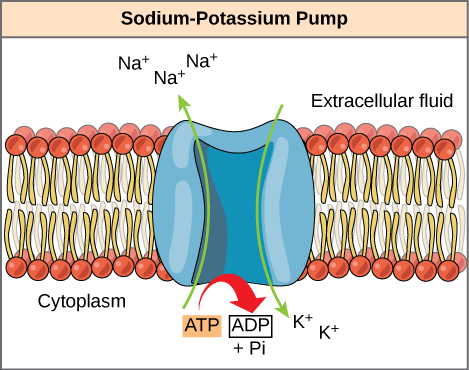Sodium ions are necessary for both plants and animals. They are usually found in nerve cells of humans. They are generally more important for animals than plants, as they regulate the electrolyte and fluid balance in the body. Sodium is a primary cation in extracellular fluids of animals and humans. These fluids such as blood plasma and ECF in other tissues regulate the transport function for nutrient and waste, which is of prime importance for our body’s homeostatic state. Sodium ions also important for the generation of nerve impulse in the human body as well as for healthy heart activity, Characteristic concentration of sodium ions is different in a different organism like 10mM in mammalian cells and in E.coli, 100mM in blood plasma, 30mM in budding yeast, etc. Salts of sodium ions such as sodium chloride are used as a preservative for jams, pickles, etc. Now let’s look at the sodium ions distribution and important and different species:
Humans:
- The minimum physiological requirement of sodium in the human body is between 115 and 500 milligrams per day, this value depends on sweating due to the various physical activity we conduct through the day and also if the person is well adapted to its environment.
- The normal serum level of sodium ion is approximately between 135-145 mEq/liter. Sodium level less than 135 in serum is known as hyponatremia, which is considered as a severe condition when sodium level is around 125 mEq/L
- The principal source of sodium in our diet is sodium chloride (common salt), most of which we consume as a part of processed food.
- The adequate intake of sodium per day is around 1.3 to 1.5, but according to reports people in the united states usually intake about 3.4 grams of sodium per day, this the minimum amount for causing problems of hypertension.
- Sodium is important for our neuron function and osmoregulation between cells and extracellular fluid as signal transduction in humans is regulated indirectly by renin-angiotensin system and atrial natriuretic peptide which depends on sodium ion movement across the nerve cell membrane.
- The distribution of sodium ion is mediated by the sodium-potassium pump.
- Relative loss of body water causes the concentration of sodium ion rise higher than required this condition is called hypernatremia. This results in thirst and conversely, this results in an excess of body water causing low sodium concentration which is known as hyponatremia. Hypernatremia can also lead to brain damage so we should intake sodium ion in adequate amount, not less nor excess.
- Some potent neurotoxin such as batrachotoxin increases the sodium ion permeability in nerves and muscle due to which massive irreversible depolarization of these membranes occurs and can be fatal also.
- Some drugs having smaller content of sodium can also cause anti-depressant to anti-seizure action in our body.

Animals:
- Animals also need the sodium ion for various physiological functions such as regulating blood volume, blood pressure and osmotic equilibrium of the body.
- Especially herbivores have commonly less sodium as plants contain an only a small quantity of sodium ions.